Building For the Arts: A Construction Management Perspective
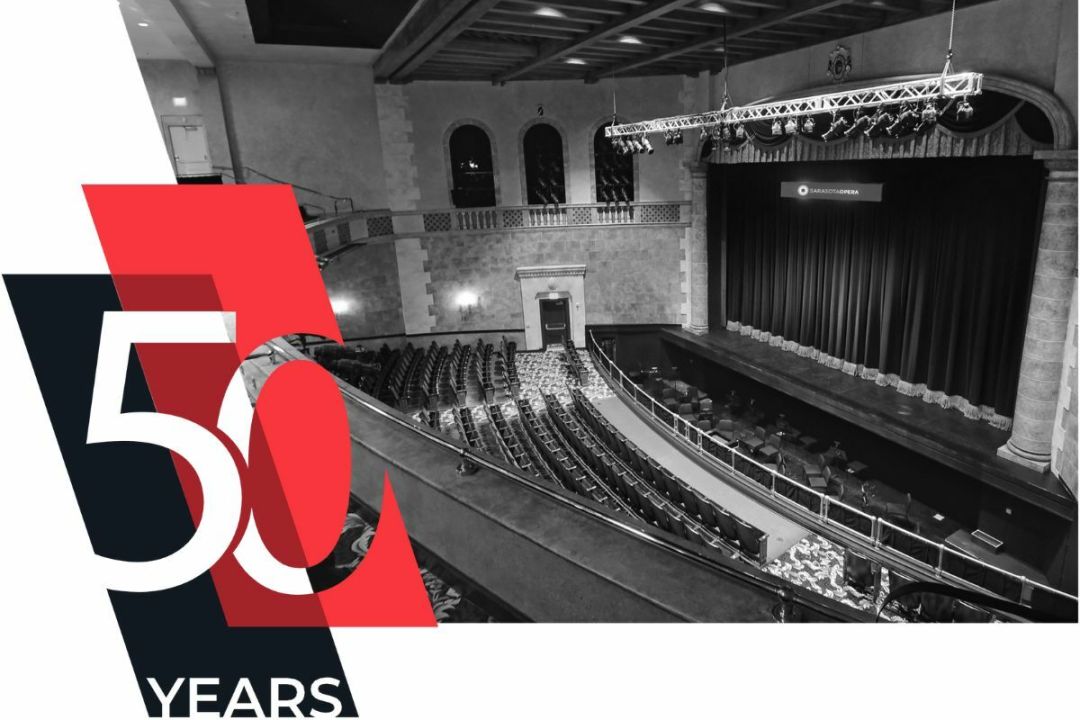
INTRODUCTION
As the leading commercial construction company on Florida’s Cultural Coast, the Sarasota-based Willis Smith Construction, Inc., has brought a variety of arts-related projects to fruition, with such venues becoming a focus of its work over the past half-century. This paper looks at some of those projects, discussing how building for the arts is its own art form, an artistically and functionally complex endeavor that presents unique demands and challenges.
"Years ago, our team made a conscious effort to focus heavily on the arts because we know the value and the economic impact it brings to our Sarasota/Manatee community,” said John LaCivita, Willis Smith President.
THEATER ARTS
In the construction or renovation of a theater arts venue, various unique and specific forces are at work.
This type of work also carries a great responsibility to accomplish the multiple goals of creating the ultimate showcase for the client; assuring premier experiences for patrons; and creating what is often a centerpiece or landmark in the community.
The construction manager’s job, according to Willis Smith Vice President David Otterness, is to supply the means and methods to deliver on all fronts. This, he added, includes doing whatever it takes to make deadlines, meet budgets and – often – deal with the unexpected.
THE SARASOTA OPERA HOUSE
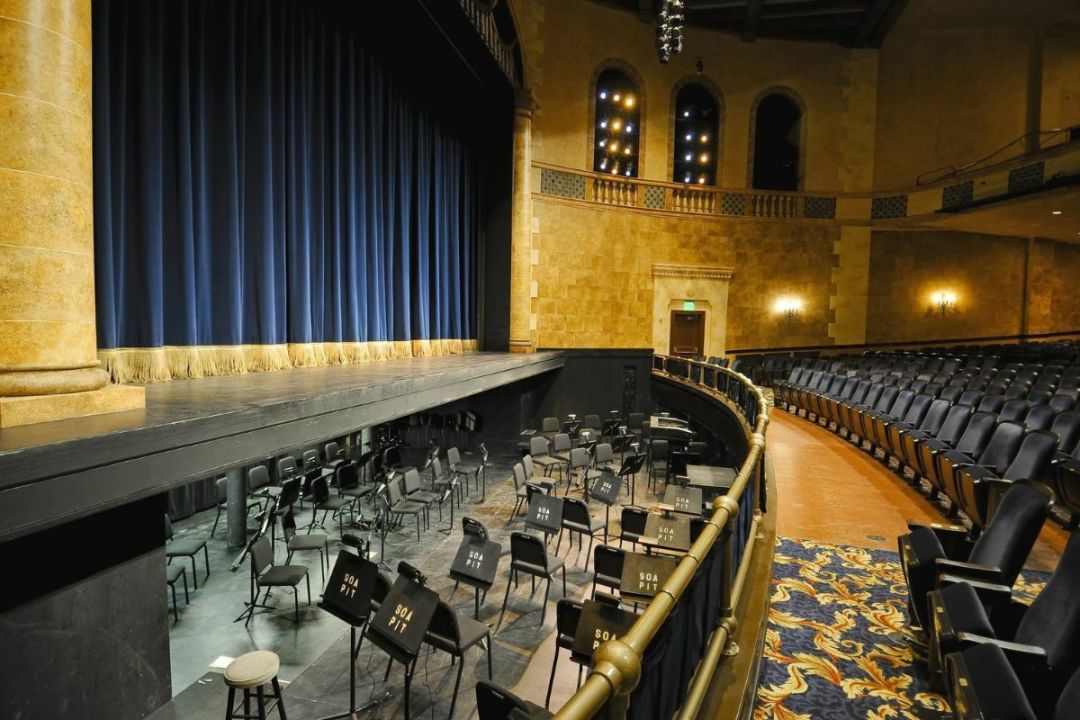
In 2007, Willis Smith embarked on the first holistic renovation of an original 1926structure to create a world-class opera facility. The simple version of the story is that the interior of the auditorium was gutted to enable the digging of a new, larger orchestra pit fitted with a hydraulic lift; the orchestra section floor was regraded to improve sight lines; new and more seating was created; historically appropriate ornamentation was added; backstage facilities were updated; and a restored three-story atrium with audience amenities became a focal point.
Behind the scenes, things were a little more complicated.
Navigating Without a Compass
One issue was timing, with a schedule of less than 10 months to complete this monumental task so the opera could open its next season in its new splendor.
Another challenge was a lack of as-built documentation showing the building as it actually was constructed in 1926, including all changes, modifications, and additions made over the years. Topping it off was the fact that what documentation did exist wasn’t completely accurate.
This came to the fore as the crew began to excavate for the new and larger orchestra pit – a fundamental goal of the renovation – only to find that the existing foundations wouldn’t allow the depth required.
As reported by the Sarasota Herald-Tribune: “Down they went, 20 feet below ground, when they realized that the foundation at the base of two proscenium columns on either side of the stage was not built as drawn in the original architectural designs for the 1926 building. More digging or shifting dirt around that ill-supported foundation might have led to the collapse of a wall or the entire building.”1
"That’s one of those things that makes you stop dead and consider the options,” said Otterness, “up to and including canceling the pit.”
Reaching out to national firms, engineers, and foundation experts, Willis Smith resolved the issue by utilizing a grout injection method underneath the foundations to stabilize them and enable digging. To accomplish this, said Otterness, “we worked three shifts, 24 hours a day, to get back on schedule and makeup the time lost.”
Making Sound Decisions
As the renovation continued, another potential roadblock presented itself. As Otterness explained: “At an opera, the voice you hear is the one on the stage, so there is no telegraphing with equipment normally found in a music hall.” For the Sarasota Opera House, this meant it could remove an existing sound booth in the balcony and add more seating.
Unfortunately, the team quickly found that the booth itself supported the roof above it. After collaboration with architects, engineers, and subcontractors, a solution was found in the design of a major truss system to go across the existing walls of the opera house. Then, working with the City of Sarasota to shut down streets in the middle of the night, construction of the new support system above the roof was accomplished.
These complications added to the already unique requirements of an opera house, where acoustics and isolating sound/vibration from electrical and mechanical equipment are paramount. All of these modern, technical considerations had to be balanced with an aesthetic return to the 1920s for the venue’s three-story lobby.
Mission Accomplished
Once all challenges were overcome, the $20 million renovation and rehabilitation project was completed, and the Sarasota Opera House opened as planned. It also drew quick acclaim, with Tampa Bay Newswire2 hailing it as “one of America’s finest venues for opera.”
"You cannot help but get inspired by arts projects,” Willis Smith Vice President David Otterness said, “because you’re building something that people have great passion for.”
BAYSIDE COMMUNITY CHURCH
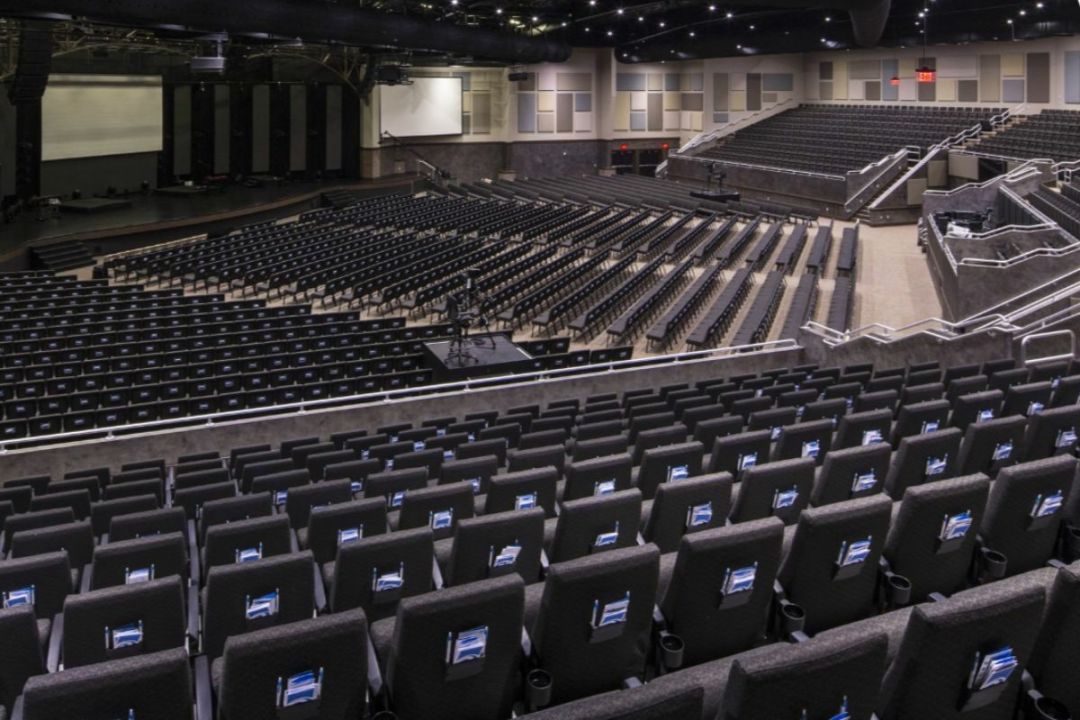
As houses of worship continue to serve their timeless community function in the 21stcentury, their success depends on their ability to meet modern demands. For Bayside Community Church, a network of churches in the region with a primary location in Lakewood Ranch, they knew it was time to grow and they wanted to grow big.
The church had aspirations for a 73,000-square-foot addition that would include new classrooms and themed play areas for children, a large foyer and café, and a massive sanctuary with stadium seating that could accommodate 2,500 parishioners. The twist was that the sanctuary also had to be a state-of-the-art performing arts hall, including audio-visual, lighting, catwalk/tension grid system, capacity for special event lighting and sound, and a 39-foot ceiling height to elevate the experience.
For this, Bayside Church turned to Willis Smith Construction, drawing on its history and expertise in building both religious facilities and performing arts venues. The result, according to Willis Smith Vice President Nathan Carr, “is probably the most high-tech audio-visual set-up in this area,” and one that drew heavily upon the company’s performance-related technological knowledge to meet and exceed expectations.
The project’s only hiccup came as a surprise announcement from church leaders during a Sunday service in which Willis Smith’s partners were invited.
"We told them that it was a 13-month project with a January start,” Carr explained. “Then they invited us to Christmas Eve service, where they announced that the project would be completed in time for the following Christmas. That took some fast readjustment, but we got it done in time. We always do.”

VENICE THEATRE
Starting out as the Venice Little Theatre in 1950, this popular and award-winning organization is now one of the largest community theaters in the United States. In 1999, it embarked on a phased remodeling that presented special considerations for its architects and builders.
Among the issues was the need for strict adherence to historical details to meet the coastal city’s Northern Italian Renaissance style. Another was an aggressive Phase I construction timeline necessitated by programming schedules.
The project began with the demolition of existing interior facilities, including administrative offices, costume workshop, storage, actor support facilities, and public areas. A new second-floor structural system was constructed, doubling floor space to 16,000 square feet and allowing for expanded offices, additional rehearsal facilities, and enhanced public areas. As the theater’s Fall Season approached, all work was done in just four months. Phase II saw the completion of the second-floor seating balcony, mezzanine, main stage, and an upgraded lobby. The exterior face lift incorporated a façade and tower true to the city’s mandated style.
Willis Smith’s construction management services began early in the construction document phase. This included the development of a bid packaging strategy, solicitation of bids, and development of a Critical Path Method schedule.
Significantly, when additional owner requirements were identified during construction, the Willis Smith team was able to fund many of them by using the construction management contingency. Thus, said LaCivita:
“We were able to assure that the owner’s value, quality, and performance expectations were exceeded.”
WESTCOAST BLACK THEATRE TROUPE
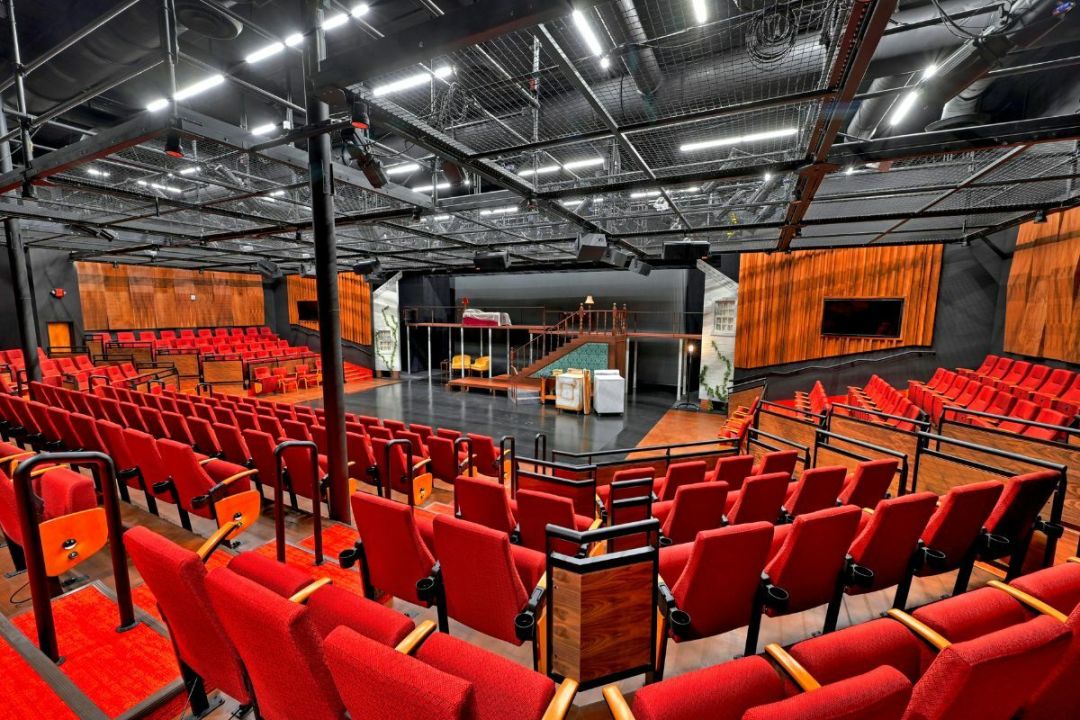
Founded in 1999, the Westcoast Black Theatre Troupe (WBTT) operated on a shoestring budget for years. The organization lacked a permanent home until 2010 when it moved into the warehouse next to Sarasota’s historic Binz Building, a property it later would purchase. Though a step up, its facilities did not measure up to the quality of its performances.
Enter Willis Smith Construction and a two-phased renovation. This project began with work on the Binz Building, an 18,000-square-foot concrete shell the troupe used as rehearsal facilities though they fell far below theatrical standards.
Here, WBTT wanted to preserve the charming exterior while modernizing the barren interior. The goal was to create a usable, productive space with rooms for on-site education programs and entertainment areas, administrative offices, and a new rooftop complex for group events/rentals.
The second phase was a wholesale renovation of the warehouse that served as the theater, with a new lobby entrance and concession area, comfortable, permanent seats, larger restrooms, upgraded dressing rooms, rehearsal space for cast members, and improved parking facilities for patrons. Also required were new HVAC, lighting and sound equipment, and renovations of the stage areas.
Upon the project’s completion, WBTT founder Nate Jacobs praised the new facilities, saying they gave the organization “security, grounding, pride” in a renovated home he promised patrons would “blow you away.”3
“A guiding principle of what we do is adherence to the components of value engineering,” Willis Smith Vice President Brett Raymaker explained. “That is, the examination of every element in the construction and recommending the best methods and materials to improve a project’s value.”
OUT-OF-DOOR ACADEMY PERFORMING AND VISUAL ARTS CENTER
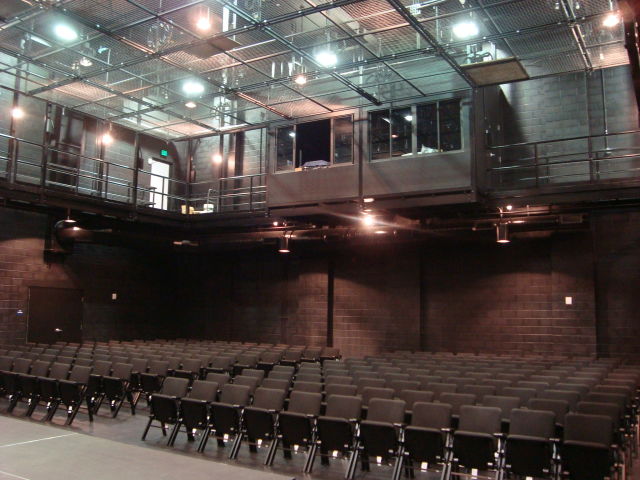
The Out-of-Door Academy (ODA) is a college preparatory school in Sarasota serving students in prekindergarten through grade 12. To accommodate expanding enrollment and enhance educational opportunities for all students, the Academy added a two-story Performing and Visual Arts Center to its Lakewood Ranch campus that included a state-of-the-art, 3,200-square-foot black box theater, seating space for up to 220 audience members, and full scene shop.
A contemporary concept, a black box theater is a simple performance space, typically a square room with black walls and a flat floor that can be used in a variety of configurations to create different experiences.
For designers and builders, it necessitates a higher level of flexibility for the theater’s technical functions.
Thus, delivering on the ODA project required the installation of an elevated catwalk utilizing a SkyDeck™ tension grid that effectively eliminates tripping and falling by overhead technical crews and enables them to easily and safely manipulate lighting, speakers, and rigging to match the event being presented.
The new facility furthers the school’s stated goal of helping students learn the “essential art of storytelling and performance,” acquiring skills that prepare them to be self-confident public speakers and effective communicators.4
SCF STUDIO FOR THE PERFORMING ARTS RECITAL HALL
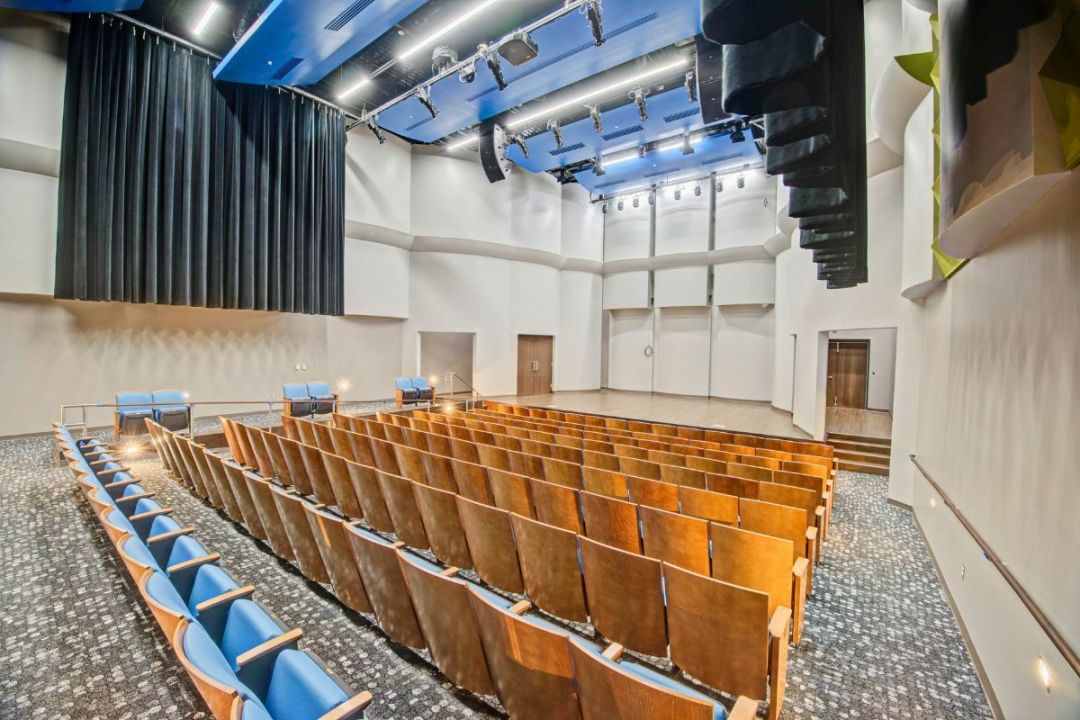
Where many performing arts venue projects are centered on maximizing a single performance space, projects like the State College of Florida’s Studio for the Performing Arts Recital Hall had to incorporate additional features to help it achieve its primary focus on education.
To help meet the needs of the college’s growing main campus in Bradenton, Florida, a dedicated structure for recitals and musician training was needed.
The resulting 14,500-square-foot complex is centered on a 150-seat recital hall that meets the most exacting acoustic standards of the classically trained music majors utilizing the space.
“In terms of acoustic modeling and engineering, this project was one of our more complex performance venues,” said Otterness.
The campus’s location near a busy international airport meant that keeping sound out of the venue was as important as tuning the sound of the interior performance space. “With so many planes flying overhead, we determined it was best to construct the roof out of concrete to reduce vibrations,” said Otterness, “and from there, we made sure the transition from the foundation to the walls was executed with the same focus on dampening vibration.”
In addition, the project required different rehearsal spaces for different instrument groups. To accommodate this, three rehearsal spaces were designed with unique properties, one each for percussion, strings, and vocals. The structure also included individual practice rooms, where students of all instrument types can hone their craft in an acoustically isolated environment
“We’re fortunate to have built enough of these in our arts-focused community that we’ve built a robust understanding of acoustics. We can now use that to elevate our region with new landmark performance spaces,” Otterness said.
MUSEUMS
Museums are vessels laden with precious cargo, a fact that greatly impacts their construction and renovation. Both can present unique challenges, from the successful rendering of design details reflective of the artifacts displayed to identifying appropriate storage for priceless objects and assuring their safe transport.
THE JOHN AND MABLE RINGLING MUSEUM OF ART
The John and Mable Ringling Museum of Art is the official state art museum of Florida. Established in 1927 as the legacy of John and Mable Ringling for the people of Florida, it has been governed by Florida
State University since 2000. Beloved and dynamic, the organization continues to grow, change and inspire. Throughout the years, Willis Smith has been a partner in construction and installation for the organization on various projects, each memorable in its own way.
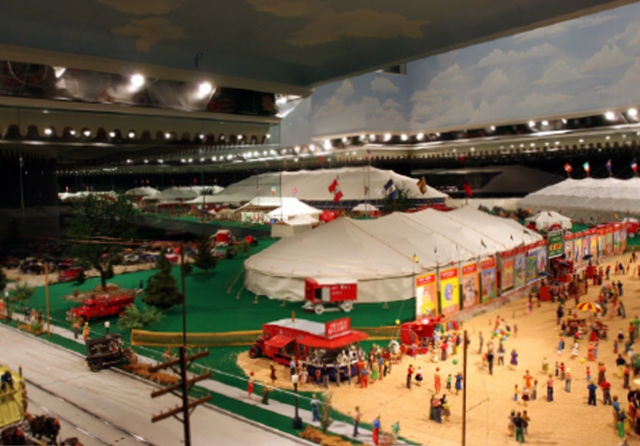
Circus Museum’s Tibbals Learning Center
Established in 1948, the Ringling Museum of the American Circus was the first to document the rich history of this phenomenally popular entertainment.5
Enriched by memorabilia from performers who called Ringling’s Sarasota Winter Quarters home and boasting a 42,000-piece miniature circus, the facility also houses the restored “Wisconsin,” the railroad car on which John and Mable Ringling traveled the country.
Tackling a Tiny Project
The late Howard C. Tibbals was a philanthropist with perhaps an unmatched love of the circus. While still in college in 1956 6, this passion inspired him to begin the creation of a three-quarter-inch-to-the-foot scale replica of the 1930s-era Ringling Bros. and Barnum & Bailey Circus. By 1999, that replica eventually and fittingly found its way to the Ringling Museum of Art in what is now the Howard C. Tibbals Learning Center.
Installation of the 3,800-square-foot model brought nuances not usually seen by builders of commercial complexes.
Chosen for the project was Willis Smith Construction, whose representatives worked closely with Tibbals in their on-site construction trailer. Anchoring the project was what Otterness called the “six feet of basement” below it with panels that allowed the model’s creator to access each of its pieces and make additions and changes “depending on the seasons or the type of performances in the big tent.”
Then there was the issue of keeping the model clean with its tens of thousands of individual pieces. To address this, Willis Smith built “a building inside a building,” with a separate mechanical system that created positive pressure. This, Otterness explained, prevents any leakage of air going into the rest of the building – and the dust it creates.
Today, the exhibit, like the art form it reflects, hosts visitors of all ages, and the Tibbals collections, according to Ringling Executive Director Steven High, attract scholars and artists from around the world.
The Historic Asolo Theatre in the McKay Visitors Pavilion
In 1949, The Ringlings purchased the interior of an 18th-century Italian theatre in Asolo, Italy for $8,000. Once relocated to Sarasota, it opened in its new home in 1952 where it remained in the Museum of Art until a new building was constructed. In 1958, The Asolo Theatre became the birthplace of the performing arts in West Central Florida, though by the close of the 20th century, the theater had fallen into disrepair.7

In 2000, the decision was made to dismantle each historic panel of the Asolo Theatre and place the panels in a secured, off-campus location while a new home was designed and constructed. Completed in 2006, the new McKay Visitors Pavilion houses the beautifully restored Asolo Historic Theatre. The new 41,273-square-foot visitors pavilion also included a gift shop, ticketing services, and a café/dining area with a prep kitchen, as well as a reception area for children, cart storage/staging area, and loading/receiving areas.
The project’s stated goal was to preserve and reveal the theater’s aesthetic and historical value based on “respect for original material and authentic documents,” Raymaker explained, “and this all was to be enveloped in a contemporary facility with upgraded mechanical, electrical, lighting, and sound systems."
The respect for history is exemplified in the careful dismantling of the building’s historic panels, which would take restoration experts two years to restore. The re-installation of the panels, Raymaker noted, required strict adherence to the International Congress of Architects and Technicians of Historic Monuments in the Venice, Italy Charter for the Conservation and Restoration of Monuments and Sites to assure the original curvature of the theater was maintained.
“Our team worked side by side with historians and period restoration experts,” Raymaker noted. “It was an extremely sensitive and complex project to get all the details right.”
Ulla R. & Arthur F. Searing Gallery Wing and Turrell Skyspace
As the art collections grew at The John and Mable Ringling Museum of Art, the need for additional gallery space resulted in the 30,000-square-footSearing Gallery Wing. The wing provided space for future art exhibits and expanded the total gallery space to 122,560 square feet. This enhanced the museum’s ability to present major traveling exhibitions and exhibit more of the permanent collection that had been in storage.

The design, inspired and approved originally by John Ringling, carefully replicates architectural details dating back to the 1920’s to continue a fluent harmony between the new and existing buildings.
It was mandatory for the added loggia to be an authentic replication. Duplication of the original light fixtures was essential to maintain the accuracy and the quality of the original building.
An interior courtyard provides for outside exhibits and the extended loggia and central courtyard allow for social gatherings.
The Turrell Skyspace
When constructing the Searing Gallery Wing, Willis Smith Construction was told to plan in advance for an art piece by James Turrell within the inner courtyard of the gallery. This was a once-in-a-lifetime design-build project which would include a trip by the team to California to view Turrell’s other creations.
Constructed within the 3,975-square-foot center courtyard of the Searing Gallery, a 38-foot-high ceiling/ roof with a 24-by-24-foot oculus open to the sky gives the illusion that the ceiling with its oculus are floating overhead. The interior structure hides LED lights that wash a changing rainbow of colors onto the walls and ceiling, providing near-hallucinatory contrasts with the ever-changing clouds, sky, and even rain overhead. Rain provides shimmering curtains of color and liquid.

Truly, “the art of construction” came into play with the ceiling finish, which had to be an exact shade of white with no visible expansion joints and the correct texture. With such large spans this can be difficult and the artist had to concede to only four expansion lines at each outer corner. The texture was important because light will either be reflected or absorbed by a particular texture. In order to understand the correct texture, several night inspections had to be scheduled with all team members to review every square inch of the ceiling for any minuscule imperfections.
Air circulation is provided by the placement of HVAC ductwork behind the walls and an air handler in the basement of the gallery. Custom handcrafted teak wood benches provide seating for each viewing experience.
“When art and construction merge, the result is an art piece in its own right,” stated Otterness.
Relocating 65 Tons of History
John and Mable Ringling were known to travel in style, from luxury cars to their yachts to their two railroad cars, the Wisconsin and the JoMar.8 When it came time for one of their many vehicles, the restored Wisconsin, to find a home at the Circus Museum, Willis Smith Construction was tasked to get the 79-foot-long railroad car the last few miles and inside the museum building.
Otterness explained it this way:
The assignment “really had us scratching our heads,” he reported. “You know, how the heck do we get a railroad car into an existing building?"
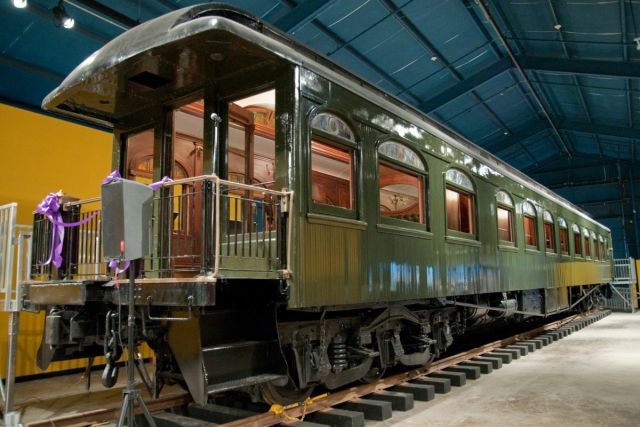
“Luckily, we had the right relationships,” he said. “First, we were able to house the car upon delivery at the Sarasota Kennel Club by the SRQ Airport, so we could build tracks inside and outside the building that would be its final home,” which was a mile or so away. “Then,” he continued, “we had cranes set up to lift the car and set it on the tracks, so we could roll it to its current position,” working with the Sarasota Police Department to complete the task at night.
“Logistically,’ he stressed, “we could not have moved this 65-ton behemoth without the relationships in the community that we’ve developed over the past 50 years.”
Asian Art Center
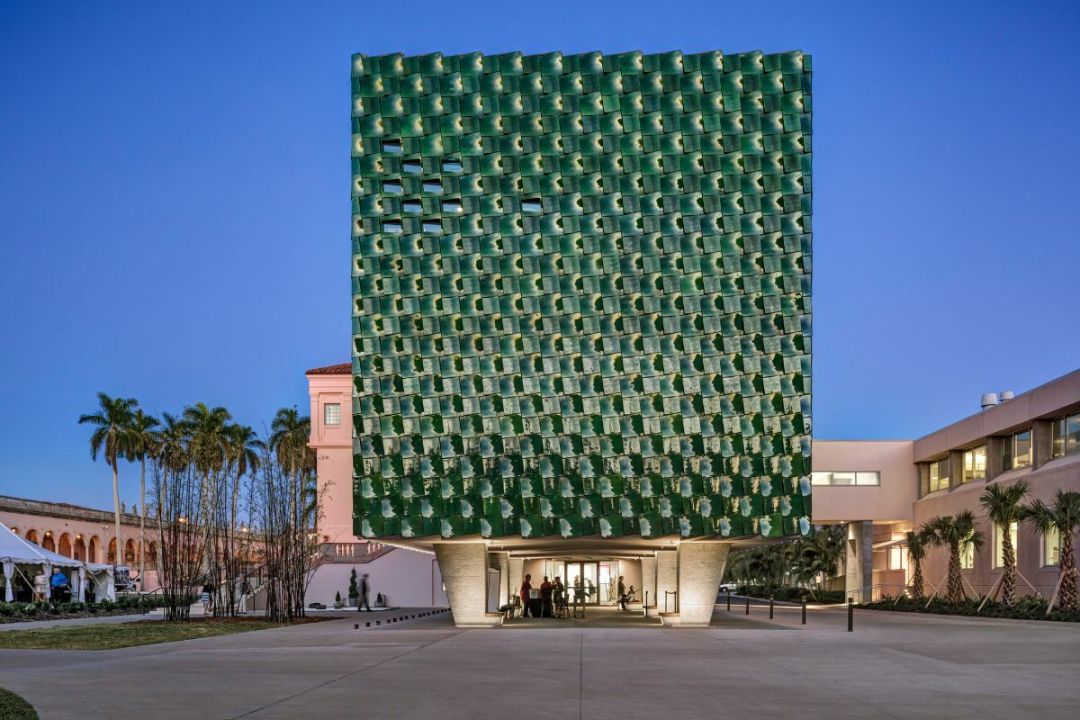
In 2016, the Ting Tsung and Wei Fong Chao Center for Asian Art opened. Behind its terra cotta façade were galleries dedicated to rotating installations of the Ringling’s Asian art holdings; a 125-seat lecture hall; an object and print study room; a tearoom; open storage; spaces to increase public access to the collections;9 and all the functional areas to support its objectives. The project consisted of a renovation, addition, and new construction of approximately 32,000 square feet to the southern wing at the Ringling Museum, Otterness said.
Like many others, Otterness explained, this museum also had exterior aesthetic elements that, though often subtle, draw the eye and prepare patrons for the unique experience within that particular art center. In this case, that meant a deep green-glazed terra cotta façade designed to represent the shell of a specific type of Asian beetle. Willis Smith Construction is proud to have executed the creative vision of this award-winning building.10
“When you’re around so much culturally significant art and so many priceless pieces, it makes you approach the project with a heightened sense of responsibility,” said Otterness.
Kotler-Coville Glass Pavilion
Heralded at its opening as “another landmark . . . on the Ringling campus,”11 this 5,500-square-foot Willis Smith Construction project was created to showcase the museum’s Studio Glass Collection.
Here, too, Otterness explained, the facade was a hint at what the facility housed. “The first thing you notice as you approach the addition is the aluminum panels, which have ripples” reminiscent of sand in shallow water. The connection? Sand, of course, is a significant component in glass manufacturing.
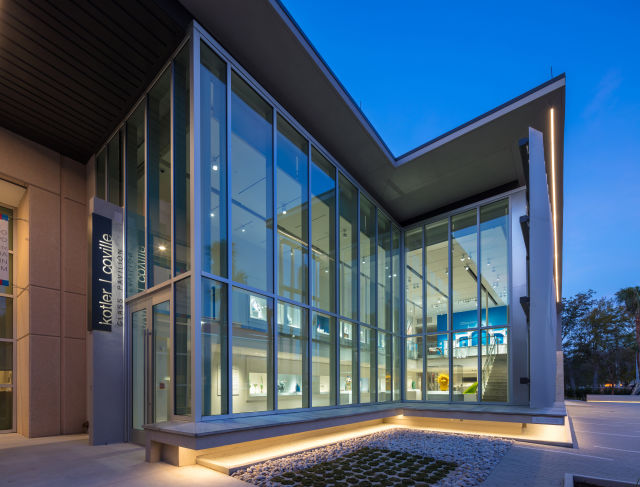
Inside, the display of the works, in casework embedded in the walls of the building, will allow more of the museum’s collection to be on display and sets the glass off to its best effect. In addition, each piece boasts its own LED lighting system, and each pedestal can be customized to permit transparent, translucent, or opaque light, depending on the nature of the work.12
Among the project’s challenges, Otterness said, was its placement at the museum’s main entrance.
“Since it was so close to the main entrance, this made visitor protection key,” said Otterness.
To assure safety, he explained, “the construction team built a temporary structure over the main entrance walkway, adding solid protection on all three sides to separate visitors from the work being done.”
In addition, due to the project’s close proximity to the Historic Asolo Theatre, all work had to be coordinated around rehearsals and performances.
THE SARASOTA ART MUSEUM OF RINGLING COLLEGE
Sometimes a project can be so complex, community-important, and historically sensitive that its construction requires meticulous planning and a multi-year commitment. Such was the case for the Sarasota Art Museum of Ringling College and the Sarasota County School Board. A joint venture whose stakeholders included the City of Sarasota, Ringling College of Art and Design, Sarasota County School Board, historic preservation organizations, and private funding streams, the project began as a dream to turn the 1927 Sarasota High School into a sprawling museum of contemporary art.
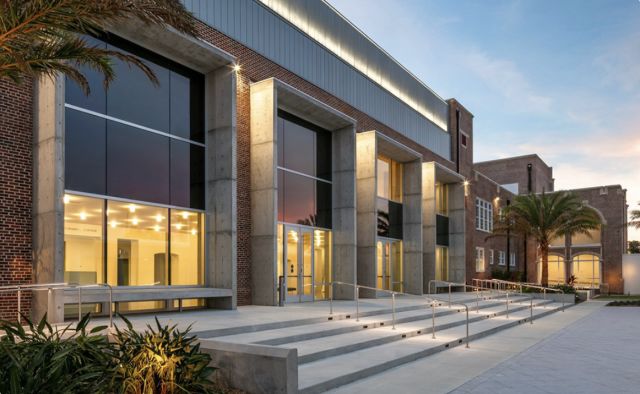
“With so much to consider, the project was about as easy as it sounds,” joked Willis Smith Vice President Taylor Aultman.
An Imposing Legacy
Designed by M. Leo Elliot in a Late Gothic Revival style, the original 62,000-suare-foot structure cut a formidable figure on Tamiami Trail.13Featuring brick pier buttresses and glazed terra cotta columns on the exterior with intricate embellishments inside, the building’s level of craftsmanship called for the skills of artisans from around the world to ensure its remediation honored the efforts of its original builders.
Obligations Met
To further honor the structure’s historic designation, Willis Smith Construction conducted an extensive search to find artisans for many of the historic features of the structure, including many that required techniques considered “dying” or “lost” today, such as terra cotta remediation, brick restoration, salvaging and milling of 500-year-old long leaf pine beams, and restoration of mosaic tile work.14
As the antique windows were, of course, not rated for hurricanes, they all had to be removed, Aultman said. He added that this also required remediation of a great deal of the structure so the old brick could hold the new windows and meet hurricane codes.
In addition, the structure predates air conditioning, which meant it was designed to “breathe, enable airflow and use convection as cooling,” said Aultman. Artwork, conversely, requires humidity and temperature control within very tight parameters with no fluctuation, continued Aultman, which further complicated the weatherproofing and climate control capabilities of the space.
“The project was broken down into two phases over four years,” said Aultman,“ with the first phase involving the exterior envelope for waterproofing and remediation.”To accomplish this, "we used a process called tuck pointing, where you cut out all the old masonry joints and put in new ones with better, more water-resistant materials.”
The Long Haul
With so many moving parts, stakeholders, and unique construction challenges, the project required four years to complete. Though it opened its doors to the public in December of 2019, work began in 2015, with Willis Smith Construction, Inc. involved early on in the planning process. That four-year span of time required the firm to stay in constant contact with stakeholders and be prepared to work through the many changes and additions to the evolving design.
“Every phase brought new challenges and changes to the client’s plans,” said Aultman. “Honoring your commitments in a project like this requires a real sense of responsibility, and we never take that lightly.”

LOOKING AHEAD
The cultural arts, like most things, are subject to change. Experts tell us that factors such as changing consumer tastes, concerns about safety and security, and higher patron experience expectations, among others, play key roles in what arts facilities will look like in the future as renovations are made, and new buildings are built. For builders, these considerations likely will add to the many existing complexities of creating meaningful, functional spaces to celebrate human creativity.

CONCLUSION
Building for the arts is, indeed, a specialized pursuit. Taking each project from ideation to realization requires attention to uniquely high levels of details and can present seemingly overwhelming challenges.
For construction management firms that work in artistic environments, that’s just part of the job – and, according to Willis Smith CEO David Sessions, the excitement.
“As the ‘means and methods’ people and client advocates, we are constantly learning from each project,” said Sessions, “and we’re always using our own creativity to get the job done as envisioned to add to the wealth of cultural opportunities in our region.”
ABOUT WILLIS SMITH
Willis A. Smith Construction, Inc. is a privately held construction management firm based in Sarasota, Florida. Since 1972, we have provided expert commercial builder services in the state’s Southwest region. Our full-service construction and construction management capabilities are customized to address each project’s specific requirements at every stage of work, creatively overcoming barriers and always meeting deadlines. Every day, area locals and visitors likely pass a Willis A. Smith project, and we are proud of the many iconic buildings we have had the opportunity to bring to the community. The growth of the area has matched our own, and today we are the region’s largest commercial construction company.
- “Opera House revamped from foundation to roof,” Sarasota Herald-Tribune, February 24, 2008, https://www.heraldtribune.com/story/news/2008/02/24/opera-house-revamped- from-foundation-to-roof/28611198007/
- “The curtain rises on Sarasota Opera’s 2022 Winter Festival,” Tampa Bay Newswire, February 15, 2022, https://www.tampabaynewswire.com/2022/02/15/the-curtain-rises-on-sarasota-operas-2022-winter-festival-105626
- “Westcoast Black Theatre Troupe Celebrates the Past and the Future,” Sarasota Magazine, January 2020, https://www.sarasotamagazine.com/arts-and-entertainment/2020/01/westcoast-black-theatre-troupe- celebrates-the-past-and-the-future
- Theater Arts, Out-of-Door Academy, https://www.oda.edu/arts/theater-arts
- History of the Circus Museum, https://www.ringling.org/circus-museum “Philanthropist who created circus-focused learning center at Ringling Museum dies at 85,” Sarasota
- Herald-Tribune, March 22, 2022, https://www.heraldtribune.com/story/news/2022/03/22/howard-tibbals-circus-historian-benefactor-ringling-museum-sarasota-dies-85/9456835002/
- The Ringling Historic Asolo Theater, https://www.ringling.org/historic-asolo-theater
- “Real History With Jeff LaHurd: More bits and pieces from Sarasota’s past,” Sarasota Herald-Tribune, April 25, 2022, https://www.yahoo.com/entertainment/real-history-jeff-lahurd-more-095704783.html
- The Ringling Museum of Art, https://www.ringling.org/museum-art
- Asian Art Study Center Earns Award Of Fine Detail, https://www.willissmith.com/news/asian-art-study center-earns-award-of-fine-detail/
- Kotler-Coville Glass Pavilion Showcases The Ringling’s Studio Glass Collection, https://www.ringling.org/kotler-coville-glass-pavilion-showcases-ringlings-studio-glass-collection
- Ibid
- “New Art Museum Adds to Sarasota’s Cultural Heritage,” The New York Times, January 2, 2020, https:/ www.nytimes.com/2020/01/02/travel/sarasota-art-museum-ringling.html
- “Sarasota Art Museum Opens Its Doors to the Public,” Sarasota Magazine, December 2, 2019, https://www.sarasotamagazine.com/arts-and-entertainment/2019/12/sarasota-art-museum-opens-its-doors-to-the- public